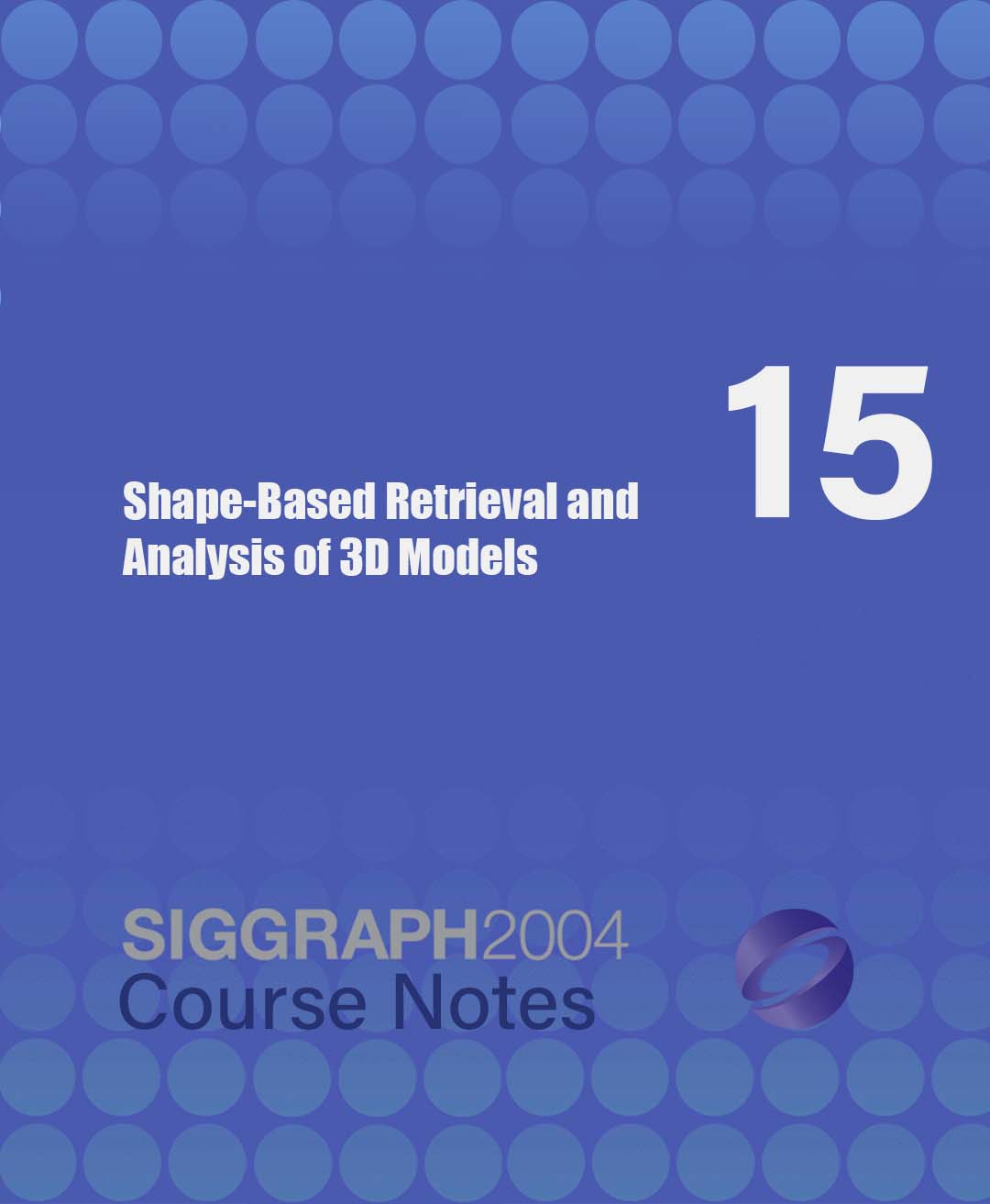“Shape-Based Retrieval and Analysis of 3D Models” by Funkhouser and Kazhdan
Conference:
Type(s):
Title:
- Shape-Based Retrieval and Analysis of 3D Models
Organizer(s):
Presenter(s)/Author(s):
Entry Number: 15
Abstract:
Prerequisites
Familiarity with basic 3D object representations commonly used in computer graphics, such as polygonal meshes and voxel grids. No prior knowledge of shape analysis is assumed, although familiarity with classical geometric structures and signal processing techniques is helpful.
Intended Audience
Computer graphics researchers and professionals interested in an introduction to the increasingly important field of 3D shape analysis.
Description
Large repositories of 3D data are rapidly becoming available in several fields, including mechanical CAD, molecular biology, and computer graphics. As the number of 3D models grows, there is an increasing need for computer algorithms to help people find the interesting ones and discover relationships between them. Unfortunately, traditional text-based search techniques are not always effective for 3D models, especially when queries are geometric in nature (for example, search for objects that fit into this space). This course surveys recent methods and applications for representing, matching, indexing, and classifying 3D polygonal models based on their shapes.
After an introduction to shape retrieval and analysis applications, the course focuses on computational representations of shape (shape descriptors). The challenge is to build concise data structures and efficient algorithms with which geometric similarity queries can be answered quickly, discriminating search indices can be built, and interesting shape features can be discovered robustly. The course presents a taxonomy of shape descriptors (for example, characterizing them according to whether they are statistical or structural, whether they measure local or global shape properties, and whether they require alignment before comparison. The goal is to provide a roadmap with guidelines for methods are most suitable for different shape matching and retrieval applications.
The course concludes with a case study of a web-based search engine for 3D polygonal models (a Google for 3D models). The key challenge is to develop query methods simple enough for novice users and matching algorithms that are robust enough to work for arbitrary polygonal models. The case study considers query interfaces based on text keywords, 2D sketches, 3D sketches, and 3D shapes, and includes results of user studies comparing them. The course also includes a discussion of future topics in shape retrieval and analysis research.





